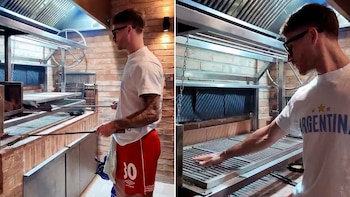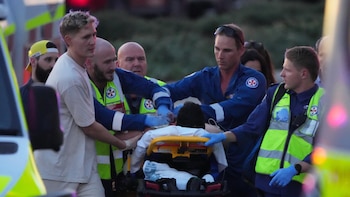Mascot robots and other models will welcome athletes and spectators, provide operational support
at venues and facilitate remote participation in the Games
Tokyo, 22 July, 2019 – The Tokyo Organising Committee of the Olympic and Paralympic Games (Tokyo
2020) today unveiled four new futuristic robots which will be deployed to assist spectators, athletes and
officials at competition venues and to relay sound, images and physical feedback from venues to those
watching remotely. The Tokyo 2020 Robot project aims to ensure the Tokyo 2020 Games will be the most
innovative ever, with the new robots expected to provide visiting fans and those watching remotely with an
experience they are unlikely to forget.
The robot project will help realise one of Tokyo 2020’s core visions – "Unity in Diversity" – aiming to foster
a welcoming environment for all athletes, visitors and those unable to attend venues who want to
experience the Games remotely at other locations in Japan.
The new models include attractive Tokyo 2020Mascot-type robots – Miraitowa and Someity –
developed by Toyota Motor Corporation, an industry
expert in the field of robot technology who are
providing support for the project. Tokyo 2020 Mascottype robots will welcome athletes and guests at
Games venues and other Games-related locations
with human-like movements such as shaking hands
and waving, and with a variety of facial expressions.
Cameras mounted on the robots’ foreheads will allow them to recognise when people are nearby and to
react to them. Tokyo 2020 and Toyota are additionally discussing a number of ways for the Mascot robots
to make it easier and more enjoyable for children to experience the Games.
Another model—the T-HR3 Humanoid robot— will transmit sounds and images from Games locations to
partner robots at remote locations. Tokyo 2020 is also considering to have them mirror each other’s physical
movements; this will allow those at remote locations who interact with the T-HR3 Humanoid robots to feel
as if they are physically present at Games-related locations.
A third model— the T-TR1 robot— is a virtual mobility robot developed by Toyota Research Institute in the
United States. It will be equipped with a camera atop a large, almost life-size display. By projecting an
image of a user from a remote location, the robot will help that person feel more physically present at the
robot’s location. The T-TR1 robot will give people that are physically unable to be present at Games-related
locations a chance to virtually attend, with an on-screen facility allowing conversations between the two
locations.
Completing the robot line-up will be the Field Support Robot (FSR), which will be equipped with automatic
driving functionality that will allow it to assist at throwing events at the Olympic Stadium. The robots will
determine the optimal path to follow when retrieving items such as hammers or javelins thrown by athletes,
guiding staff along paths that avoid obstacles. It will help reduce the amount of time needed to retrieve
items as well as reduce the amount of human support required at events. Tokyo 2020 and Toyota will be
working with the International Association of Athletics Federations in developing the FSR for the Tokyo
2020 Games.
Other new robots being deployed as part of the Tokyo 2020 Robot Project will be announced in due course.
T-HR3 Humanoid robot T-TR1 robot Field Support robot
You can find additional details of the Tokyo 2020 Robot Project and the robots themselves from our website
at https://tokyo2020.org/en/games/vision/innovation/
Note: some aspects of these robots’ designs may be changed
25 Years at #1: Your best source of news about the Olympics is www.aroundtherings.com, for subscribers only
Últimas Noticias
Brigitte Henriques: “The important thing is that the women who are elected should be chosen for their ability, not because we are looking for modernization in terms of gender”
“When I was a girl I couldn’t find a club to play soccer in because most of them didn’t work with women,” Henriques tells Around the Rings during an in-depth interview in Crete, Greece.

The Hula Report: Winds of Change for ANOC in Crete
New leaders coming for peak Olympic group. Whether other candidates emerge in the months ahead, a contested election for the ANOC presidency will be a first for the organization.

Gilles Gilbert Gresenguet, presidential candidate for AFCNO: “We must take advantage of Paris 2024 to bring the Olympic Games back to French”
The elections take place November 18, and Abakar Djermah Aumi, president of the Chad Olympic Committee, is also aiming to win them.

USOPC announces 613-member 2020 U.S. Olympic Team

Roger Federer pulls out of Tokyo Olympics: "I am greatly disappointed"
(ATR) Federer cites "a setback with my knee" for the decision.




